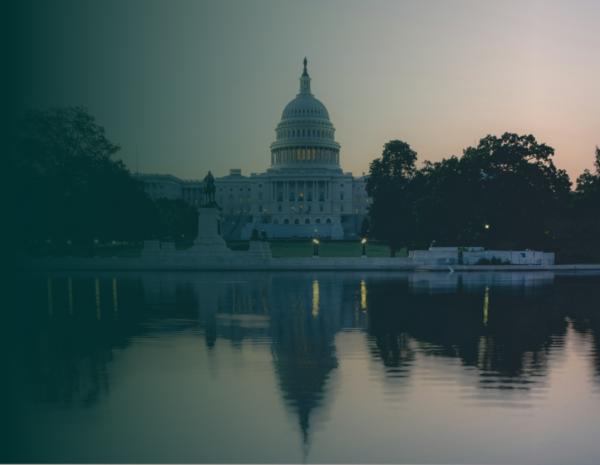Marijuana — more formally cannabis — is the most commonly used illegal drug in America. While legal in some states, it’s still illegal nationwide at the federal level. Still, almost 50% of Americans have used cannabis at least once, and nearly 20% have used in the past year. These rates are only increasing. Legal prohibitions for both medical and recreational marijuana use are rapidly eroding. After decades of complete legal prohibition on cannabis, weed has gone mainstream. Twenty-four states have legalized cannabis for recreational use. Today, marijuana is more commonly used and easily accessible than any drug, barring alcohol.
Cannabis policy has evolved rapidly in the 21st century. At present, most innovation and change has occurred at the state level. States have legalized medical and recreational use, and devised tax and regulation schemes for both cases. Both state and local governments have also released people with cannabis-related convictions from prison and expunged related criminal records.
Federally, cannabis is still a Schedule I drug, considered to have little to no medical benefit and a high potential for abuse. It is subject to criminal penalties via the Drug Enforcement Administration (DEA.) Yet, as more states legalize recreational use, even the federal government is considering reforms to its cannabis policy. Cannabis policy is a dynamic, rapidly evolving field. Innovative legislation is pending in state houses across the country as well as on Capitol Hill.
History of Cannabis Policy
In recent years, evolving attitudes and shifting policies characterize cannabis policy. However, for most of its history, cannabis policy was nonexistent — marijuana was simply prohibited. Cannabis and related industrial products made from hemp were legal in the late 19th and early 20th centuries.
The Marihuana Tax Act of 1937
During Prohibition, several states passed laws criminalizing cannabis. These new laws were triggered by rising marijuana use, then spelled “marihuana,” sensationalist media coverage, and racial prejudices. In 1937, federal prohibition arrived with the The Marihuana Tax Act of 1937. This legislation effectively banned the use and sale of cannabis by establishing a restrictive tax and regulation scheme. While marijuana was not technically illegal, the Act marked the beginning of widespread cannabis prohibition.
The Controlled Substances Act of 1970
No major changes in cannabis regulation were made at the federal level for decades. This stangancy ended with the Controlled Substances Act of 1970. Cannabis was classified as a Schedule I drug with no accepted medical use alongside drugs like heroin, cocaine, and LSD. The Act kicked off decades of harsh anti-drug use policies at the federal level, capped off by Reagan’s “War on Drugs” and Clinton’s 1994 Crime Bill.
Widespread Legalization of Medical Marijuana
By the 1990s, state governments were already pioneering less restrictive cannabis use policies. Beyond recreational use, marijuana was increasingly seen as beneficial for medical purposes. Patients, advocates, and medical professionals recognized the therapeutic benefits of cannabis for chronic pain, epilepsy, cancer, and more. In 1996, California became the first state to legalize medical marijuana with the passage of Proposition 215, also known as the Compassionate Use Act. This landmark legislation paved the way for similar initiatives across the country. By 2016, a majority of states had legalized medical cannabis use.
Comprehensive Regulatory Frameworks for Cannabis Policy
The next major turning point in cannabis legislation came in 2012. Colorado and Washington became the first states to legalize recreational cannabis for adult use through voter-approved initiatives. This move marked a significant departure from decades of prohibitionist policies. It reflected changing societal attitudes and growing support for cannabis legalization. Since then, many states have followed suit in legalizing recreational use through ballot measures or legislative action. Some states begin with simple decriminalization. However, it’s much more common for states to adopt comprehensive regulatory frameworks for the cultivation, distribution, and sale of cannabis to adults.
Federal vs. State Cannabis Laws
Federal and state cannabis laws conflict significantly. They’ve been at odds since the 1990s, when western states began experimenting with looser cannabis regulations. At the federal level, marijuana growth, possession, and trafficking remain crimes, irrespective of states’ marijuana laws. Yet, the federal government has opted to allow state-level innovations in cannabis policy. The Department of Justice and the DEA are largely “looking the other way” and declining to pursue prosecutions.
This federal-state conflict hurts the cannabis industry. Cannabis businesses must contend with an ambiguous legal status. This status has made it difficult to access banking services, insurance policies, credit card processing, and other essential services. Because of these restrictions, the cannabis industry is overly reliant on cash payments, which creates public safety and tax compliance concerns. It’s clear that, for the cannabis industry to thrive, better alignment between state and federal cannabis policy must be achieved. There are several pending pieces of federal legislation that aim to do so.
Federal Cannabis Laws
In April of 2024, the DEA proposed rescheduling cannabis from Schedule I to Schedule III. This change would allow for medical use. Schedule III drugs are those which have medical uses but are subject to prescription requirements. Examples of Schedule III drugs include ketamine, most barbiturates, and buprenorphine. They cannot be dispensed without a valid prescription. This proposed shift spells good news for the medical marijuana industry. Recreational marijuana would, of course, still be illegal under the Controlled Substances Act.
In Congress, several pieces of cannabis-related legislation are currently pending. This includes the Marijuana Opportunity and Reinvestment and Expungement Act (MORE) Act. If passed, it would:
- Decriminalize and deschedule cannabis
- Invest federal money into communities adversely impacted by the War on Drugs
- Allow for the expungement of certain cannabis offenses.
The MORE Act has not yet passed out of committee in the House or Senate.
Other legalization bills have been proposed, including the States Reform Act of 2023 or the Strengthening the Tenth Amendment Through Entrusting States (STATES) Act. Both would deschedule cannabis and largely defer regulatory authority to state governments. Like the MORE Act, these measures have also made little progress in Congress.
The SAFE Banking Act of 2023 is another bill that has not yet passed. However, it has had much more success in Congress than full legalization bills. The SAFE Act would protect financial institutions and other businesses with clients in the cannabis industry, effectively increasing cannabis businesses’ access to traditional financial services. The SAFE Act was amended and passed out of its Senate committee as the SAFER Act in the fall of 2023. It has not been voted upon by the full Senate. The House has passed similar legislation on many occasions.
State Cannabis Laws
On the whole, state-level cannabis policy has moved towards wider permissibility and accessibility in the 21st century. States have taken diverse paths in the shift towards legalization. Many first created medical marijuana programs before moving to full recreational use.
In states with citizen-initiated ballot initiatives, voters have often legalized cannabis. More often, however, state legislators have passed laws allowing for medical and/or adult-use recreational cannabis. No matter the state, recreational-use laws almost always allow for at-home cannabis growth for personal use.
At present, only three states still completely bar both medical and recreational cannabis use. This includes Idaho, Nebraska, and Kansas. Twenty-four states have fully legalized adult medical and recreational. The remaining states have a patchwork of regulated medical cannabis programs and low THC/CBD programs. There is significant diversity in state-level medical cannabis programs. The most restrictive allow only cannabis-derived medications to treat a narrow set of disorders. Other medical programs allow cannabis to be prescribed for a wide range of illnesses, from anxiety to chronic pain.
Expunging the criminal records of people with cannabis-related convictions is another policy trend. Thirteen states have allowed for the expungement of some cannabis-related convictions. Eleven others have automatic record clearance for all cannabis convictions. These policies attempt to right the wrongs of the “War on Drugs.” During that era, Black and Latinx communities across the country were over-policed and over-incarcerated. On the federal level, President Biden has issued mass pardons to those with federal marijuana possession convictions. This affected a very small number of people, as the federal government rarely pursues possession charges.
Get Started With Plural to Track Cannabis Policy
Top public policy teams trust Plural with their legislative tracking and stakeholder management needs. With Plural, you’ll:
- Access superior public policy data
- Be the first to know about new bills and changes in bill status
- Streamline your day with seamless organization features
- Harness the power of time-saving AI tools to gain insights into individual bills and the entire legislative landscape
- Keep everyone on the same page with internal collaboration and external reporting all in one place
Create a free account or book a demo today!
More Resources for Public Policy Teams
Key Benefits of AI for Lobbying & Advocacy
Want to be able to explain the benefits of artificial intelligence for lobbying and advocacy? Everyone is talking about AI. And we get it, it’s not simple to understand. But as an AI-powered organization, Plural is here to help you get the most out of advancements in AI to make your job as a policy […]
2025 Legislative Committee Deadlines Calendar
Staying on top of key deadlines is manageable in one state, but if you’re tracking bills across multiple states, or nationwide, it quickly becomes overwhelming. That’s why we created the 2025 Legislative Committee Deadlines Calendar. Stay ahead of important dates and download our calendar today. Get started with Plural. Plural helps top public policy teams get […]
End of Session Report: Florida 2024 Legislative Session
The 2024 Florida legislative session saw significant activity in the realm of insurance and financial services, reflecting key themes of consumer protection, market stability, and regulatory modernization.




